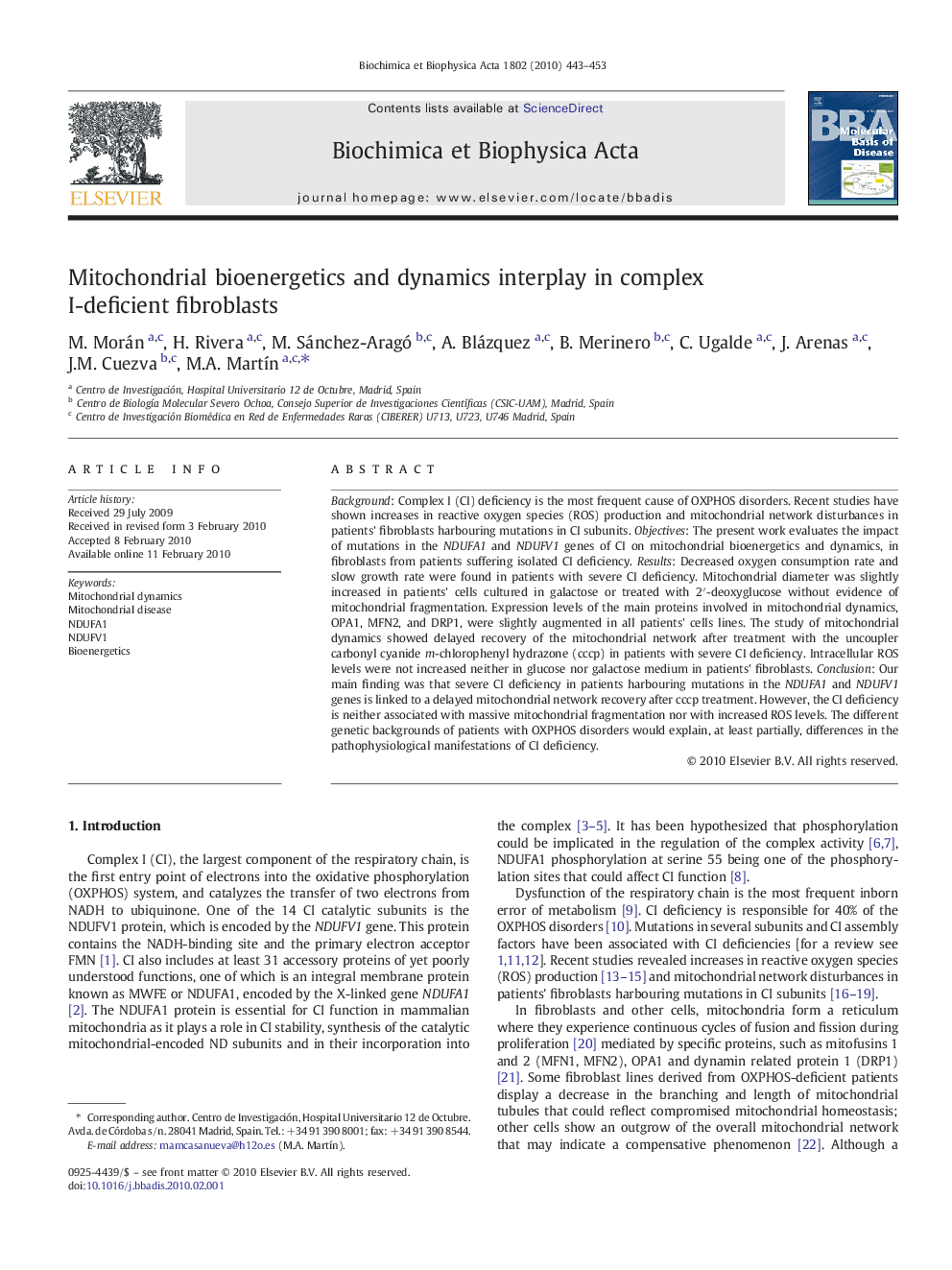| Article ID | Journal | Published Year | Pages | File Type |
|---|---|---|---|---|
| 1905389 | Biochimica et Biophysica Acta (BBA) - Molecular Basis of Disease | 2010 | 11 Pages |
Background: Complex I (CI) deficiency is the most frequent cause of OXPHOS disorders. Recent studies have shown increases in reactive oxygen species (ROS) production and mitochondrial network disturbances in patients' fibroblasts harbouring mutations in CI subunits. Objectives: The present work evaluates the impact of mutations in the NDUFA1 and NDUFV1 genes of CI on mitochondrial bioenergetics and dynamics, in fibroblasts from patients suffering isolated CI deficiency. Results: Decreased oxygen consumption rate and slow growth rate were found in patients with severe CI deficiency. Mitochondrial diameter was slightly increased in patients' cells cultured in galactose or treated with 2′-deoxyglucose without evidence of mitochondrial fragmentation. Expression levels of the main proteins involved in mitochondrial dynamics, OPA1, MFN2, and DRP1, were slightly augmented in all patients' cells lines. The study of mitochondrial dynamics showed delayed recovery of the mitochondrial network after treatment with the uncoupler carbonyl cyanide m-chlorophenyl hydrazone (cccp) in patients with severe CI deficiency. Intracellular ROS levels were not increased neither in glucose nor galactose medium in patients' fibroblasts. Conclusion: Our main finding was that severe CI deficiency in patients harbouring mutations in the NDUFA1 and NDUFV1 genes is linked to a delayed mitochondrial network recovery after cccp treatment. However, the CI deficiency is neither associated with massive mitochondrial fragmentation nor with increased ROS levels. The different genetic backgrounds of patients with OXPHOS disorders would explain, at least partially, differences in the pathophysiological manifestations of CI deficiency.
